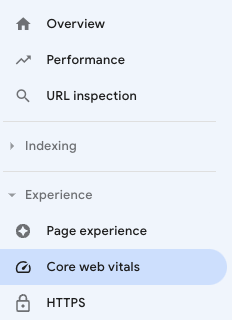Back in May 2020, Google announced the introduction of Core Web Vitals – a set of metrics designed to measure the health of a website by looking at three specific user experience (UX) areas: loading performance, interactivity and visual stability. These metrics have since become critical for eCommerce website owners as they encapsulate real-world UX signals that Google now factors into its search rankings.
In this article, we will explain what Google’s Core Web Vitals updates are, why they’re important, how to measure Core Web Vitals and what you can do to prepare for the latest update. Let’s start by summarising what Core Web Vitals are.
With Google encouraging webmasters to push content that is user-friendly, there has been more emphasis on ensuring that content loads fast, is mobile-friendly and doesn’t shift when users are on the page. Since Core Web Vitals was introduced in 2020, Google has been updating and tweaking its guidelines to be more user-centric. The Core Web Vitals metrics that have become part of Google’s Page Experience signals include:
Largest Contentful Paint (LCP): measures the pages loading performance, specifically the time it takes for the largest content element in the viewport to become fully visible. To provide a good UX, LCP should occur within 2.5 seconds of when the page first starts loading.
First Input Delay (FID): measures interactivity, specifically the time it takes from when a user first interacts with a page to the time the browser responds to the interaction. To provide a good UX, pages should have a FID of less than 100 milliseconds.
Cumulative Layout Shift (CLS): measures visual stability, specifically how often users experience unexpected layout shifts. To provide a good UX, pages should maintain a CLS of less than 0.1.
It’s important to remember that the digital landscape is never static; Core Web Vitals are set to evolve and change. Over time, Google plans to incorporate more user-centric metrics, ensuring that the web is both as useful and usable as possible.
Over the years, the Chrome team have been testing and seeking feedback on their guidelines to provide users with the best possible experience. In 2022, they announced Interaction to Next Paint (INP) as a new metric for responsiveness, working with the online community to test its efficacy.
After a year of further testing and feedback, the Chrome team chose to replace the original FID metric with INP as of March 2024. It’s recommended that the INP should be 200 milliseconds or less for a fast and responsive UX.
If you’re interested in the reasoning behind the change in more detail, take a look at the Chrome team’s blog post.
To help site owners and developers take the necessary steps and evaluate their pages for the new metric, Search Console’s Core Web Vitals report will stop showing FID metrics and use INP as the new metric for responsiveness as of March 2024. These metrics can be found under the Experience – Core Web Vitals tab on Google Search Console as shown in the image below.

Although INP is replacing FID, the optimisations for both aren’t too dissimilar. In general, we would always recommend site owners achieve a good Core Web Vitals score to provide the best UX and to improve their chances of ranking higher.
However, great page experience involves more than Core Web Vitals – good statistics in the Core Web Vitals report don’t guarantee good rankings. If you want to optimise your site to help you rank better, we offer a range of search engine optimisation, conversion rate optimisation and data-driven strategies to help your website perform at its best. Get in touch with us today to find out more.
As of June 2021, Google considers Page Experience as an official Google ranking factor. Page Experience score is determined by a combination of factors that contribute to a positive customer experience overall, these include factors like:
Core Web Vitals
Page security
Mobile-friendliness
How easily users can navigate to the main content of your pages
By optimising your site for the Core Web Vitals metrics, users are likely to be more engaged, have a better on-site experience and are less likely to leave the site because the content didn’t load fast enough. Ultimately, if your domain scores well on Core Web Vitals metrics and your content is useful and relevant, this increases its chances of ranking higher in organic search.
There are a number of ways that you can measure your site’s Core Web Vitals. Here are some of the ones that we recommend:
Google Search Console – a free Google tool which allows you to report and measure various metrics involved with your website. This includes search performance, site issues and UX.
PageSpeed Insights – another free Google tool, PageSpeed Insights analyses the content of your website or a web page and provides suggestions on how to improve its performance on mobile and desktop.
GTMetrix – this is a free service with a premium option to analyse the performance of your site. It allows you to use multiple tools to create an overall view of which elements are causing load issues.
Chrome Dev tool – built directly into the browser, you can see various elements of a webpage to analyse its performance. This can be easily accessed by right-clicking the page and selecting Inspect.
There are also some smart ways to build these metrics into your primary reporting dashboards. For example, using APIs to import Core Web Vitals into Google Looker Studio reports, you can make sure things aren’t trending the wrong way.
Google’s guidelines and algorithm updates are constantly changing to provide users with the best possible online experience. To prepare for any Google update, consider the following:
Regular Audits: Conduct regular audits to understand and monitor your website’s performance.
Optimise Loading Times: Improve loading times by optimising images, leveraging browser caching and reducing server response times.
Enhancing Interactivity: Streamline JavaScript execution and minimise third-party scripts to decrease delays in interactivity.
Ensuring Stability: Use CSS aspect ratio boxes for images and embeds to prevent layout shifts and avoid inserting new content above existing content unless in response to a user action.
By taking these steps and focussing on optimising your site and the UX on your site, you’ll not only be prepared for what’s next in Google’s Core Web Vitals, but you’ll also ensure that your site offers an experience that users – and search engines – will favour.
It’s inevitable that more updates and tweaks to these signals will occur over the years. Whilst we can’t predict what Core Web Vitals will look like years down the road, as it stands, page speed is one of the many contributing factors that can impact where your website shows in the search results.
By taking action to optimise your site, from speed to the quality of content that you produce, you can work through the most pressing issues that discourage users from using your site. Not only will this help you produce a more stable, effective and pleasant UX, but it could also lead to more conversions.
Ultimately, this update comes down to providing users with a quality experience; something that website owners should always be striving for. The only difference with the Core Web Vitals update is that these new metrics clearly show us what Google perceives as good, acceptable and poor levels of website performance.
By not keeping your site up-to-date with these changes and ensuring that your content is relevant, you could potentially see a drop in rankings. Remember, if your website is faster than a competitor’s site, but the competitor’s content is more relevant to the search user’s query, your competitors would still outrank your fast content.
If you’d like us to audit your site and provide recommendations to ensure that your site is compliant with Google’s guidelines, don’t hesitate to get in touch.
